Open Source Symbolism: Exploring the Stories Behind Project Mascots and Logos
The Linux Foundation | 12 July 2023
In the vibrant world of open source communities, collaboration, innovation, and shared values are defining traits. One fascinating aspect that encapsulates these principles is using mascots and symbols. Mascots serve as narrative devices and symbols of a project's mission, reflecting core values and fostering community spirit. This article delves into the stories behind mascots and symbols of open source projects, emphasizing their contribution to organizational symbolism. Each is crucial in embodying and conveying the project's mission, values, and ethos, making abstract concepts relatable and engaging. The community's involvement in their design process fosters a sense of identity and belonging while humanizing technology.
Tux: the approachable Linux penguin started it all
None is more widely recognized for open source mascots than Tux, the Linux penguin. The story begins with a real-life encounter. During a visit to an Australian zoo, a tiny penguin bit Linux creator Linus Torvalds, an amusing incident that inspired the penguin logo for Linux. Since its inception, Tux has evolved as the personification of the Linux community.
Tux embodies the friendly, reliable, and accessible ethos of Linux. Anyone who has seen the film March of the Penguins will also know that the survival of the emperor penguin depends on mass collaboration. From keeping each other warm against the howling South Pole winds to trading off on incubating penguin eggs, the penguin is a team player of the first order. So even if Tux’s origins hail from the reported zoo incident, it’s a highly suitable mascot for open source’s most widely adopted project.
And the symbolism doesn't stop at Tux. Other open source projects under the Linux Foundation also use mascots to represent their core principles and values. But, much like the intricate dynamics within a colony of emperor penguins, the essence of the open source community is not solely captured in its projects or technologies. It is also reflected in the stories and thought processes behind these mascots, as they collectively represent the spirit of collaboration, innovation, and shared values in the open source world.
Let's delve deeper into the rich symbolism and narratives these mascots offer.
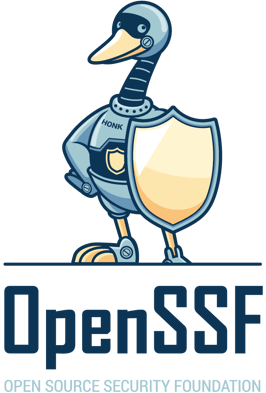 OpenSSF armored goose: advancing open source security
OpenSSF armored goose: advancing open source security
Introducing a bird of a different feather! The Open Source Security Foundation (OpenSSF) logo presents a compelling visual narrative featuring an armored goose holding a shield. This unique and creative mascot perfectly embodies the foundation's mission in open source security.
Geese, known for their protective nature, possess remarkable adaptability and versatility, highly valuable traits in the ever-evolving cybersecurity landscape. By incorporating elements of robotics, armor, and a shield, the mascot symbolizes the fusion of technology and automation in enhancing security measures. It represents the innovative and modern approaches OpenSSF employs to secure open source software. And let’s be honest. Geese know how to make an awful lot of noise, effectively drawing attention to their cause. They fly in impressive formation on migration paths, sharing roles and responsibilities, and, like penguins, they work effectively as a team.
The armor and shield, traditional symbols of defense and protection, form the foundation of OpenSSF's commitment to safeguarding the open source ecosystem. They embody the strength and resilience required to counter threats and vulnerabilities effectively.
The presence of the armored and shield-bearing goose highlights OpenSSF's unwavering dedication to championing security in the open source landscape. It is a powerful representation of the foundation's readiness and adaptability in navigating the challenges of ensuring open source security. Through this mascot, OpenSSF emphasizes the vital importance of resilience, defense, collaboration, and innovation in its mission to advance the security of open source software.
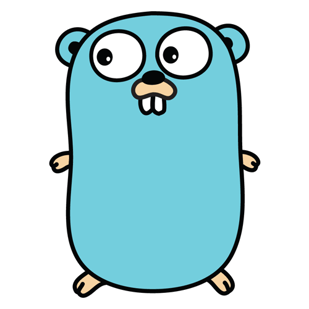 Go's playful gopher: simplifying the complex
Go's playful gopher: simplifying the complex
The Go language, often called Golang, boasts a playful and adorable mascot – the Go gopher. Go is a Google project, but the Linux Foundation hosts the Entity Framework for Go (ent) and the CNCF's KO Project, a Go application container. Nevertheless, the Gopher is everpresent in all Go endeavors.
This cute creature, designed by renowned illustrator Renee French, visually represents the project's primary goal: to make programming simple and enjoyable.
Gophers are known for their industrious nature and capability to navigate complex underground tunnel systems. Similarly, Go aims to help developers effectively navigate the complexities of programming. It offers a simple, efficient, and robust language allowing developers to create complex programs easily. The gopher's friendly and inviting demeanor represents this dedication to user-friendliness and accessibility.
Moreover, choosing a gopher as a mascot also brings fun and light-heartedness. This aligns with the ethos of the Go community, which believes that coding should be about solving complex problems and enjoying the process.
The Go gopher is more than just a mascot; it represents the project's commitment to creating an accessible, efficient, and enjoyable developer programming experience. It symbolizes a manageable yet inviting language, not unnecessarily complex but simple and straightforward, echoing the ideals of its open source community.
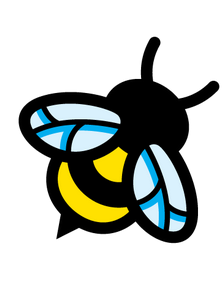 eBPF's industrious bee: buzzing with efficiency
eBPF's industrious bee: buzzing with efficiency
eBPF, a technology designed to run sandboxed programs in privileged execution contexts, such as operating system kernels, uses a buzzing bee as its mascot. The bee is an apt symbol of eBPF's characteristics, such as industry, efficiency, and cooperation. Bees reflect eBPF's mission to run various system instrumentation and flexible applications efficiently and harmoniously. The bee helps craft a brand identity reflective of the project's core principles.
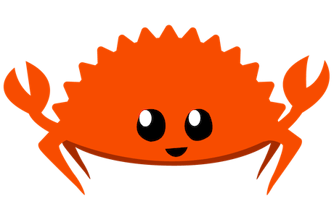 Delta Rust “Rustacean”: reflecting resilience and reliability
Delta Rust “Rustacean”: reflecting resilience and reliability
delta-rs (Delta Rust), a part of the open source Delta Lake project focused on bringing ACID transactions to big data workloads, has selected a whimsical mascot – the crafty 'Rustacean’ named Ferris, which was adopted from the Rust community. This playful crab carries symbolic weight, aligning with the project's core principles of offering consistent and reliable data.
The Rustacean's defining characteristics resonate with the inherent traits of crabs. Known for their secure grip and protective nature, crabs symbolize the surety and safety Delta Rust aims to provide when dealing with data. The metaphor of a crab tightly holding onto its prey mirrors Delta Lake’s commitment to data consistency and reliability.
.png?width=309&height=189&name=sodalogo%20(1).png) SODA Foundation's intelligent dolphin: symbolizing data autonomy
SODA Foundation's intelligent dolphin: symbolizing data autonomy
The SODA Foundation, committed to fostering data autonomy through an open source data framework, chose a dolphin as its mascot. Known for their intelligence, grace, and communication skills, dolphins perfectly symbolize SODA's mission to create an intelligent, seamless, and interoperable data management platform. The dolphin mascot emphasizes the SODA Foundation's dedication to advancing data technologies while embodying its spirit of freedom and autonomy in the data realm.
Honorable mentions
You may have noticed that the above projects feature animals and for good reason. For some open source project communities, though, inanimate objects and even human characters have been chosen to represent open source projects by their communities as well. Here are two great examples of effective symbolism in open source:
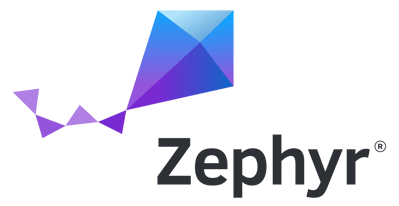 Zephyr's soaring kite: embodying the power of possibilities
Zephyr's soaring kite: embodying the power of possibilities
The Zephyr Project, a scalable real-time operating system (RTOS) for embedded devices, chose a soaring kite as part of its logo.
Kites symbolize freedom, aspirations, and the power of the imagination. They require a balance of precision and creativity to fly, traits that mirror the objectives of the Zephyr Project to deliver a reliable, innovative, and efficient RTOS. The kite, aloft in the expansive sky, signifies the endless possibilities that Zephyr, as an open source project, offers to its community.
Moreover, the wind directs a kite's flight, a clear nod to Zephyr's name. In Greek mythology, Zephyr is the god of the west wind, known for its gentle breezes. This ties back neatly to the project's promise of delivering a lightweight yet powerful RTOS, guiding it through the sometimes turbulent, sometimes gentle winds of the tech world.
Zephyr's kite logo strongly symbolizes its commitment to driving innovation and possibilities in the embedded device landscape. The kite, soaring freely in the sky, encapsulates the project's ambition to enable new opportunities in IoT and edge computing. This image reinforces the principles of the open source community — innovation, freedom, and aspiration.
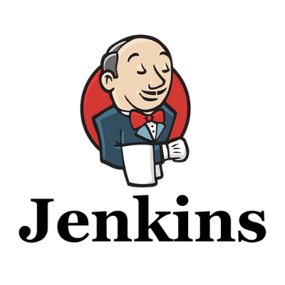 Jenkins' helpful butler: a symbol of service automation
Jenkins' helpful butler: a symbol of service automation
Jenkins, an open source automation server, chose a symbol reflecting its mission and a diligent and efficient butler. Chosen via a community-driven process, the butler embodies the project's core principles of streamlining and automating the tedious parts of software development. This mascot is a daily reminder of the project's commitment to serving its user community.
Final thoughts
As the open source landscape evolves, mascots will remain integral to their communities, reflecting the spirit of innovation, collaboration, and inclusivity that drives open source. They tell the unique story of their respective communities, symbolizing the projects they represent and the ethos of open source collaboration.
Which mascots resonate with you? Let us know, and we will explore more of them in the future!